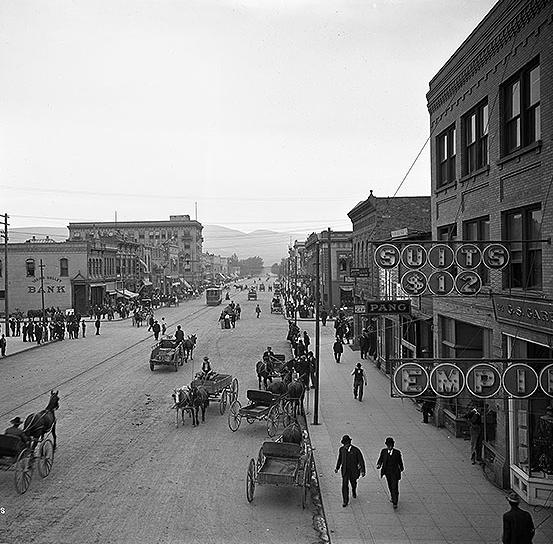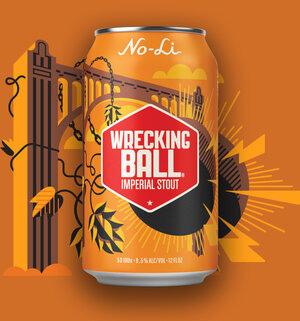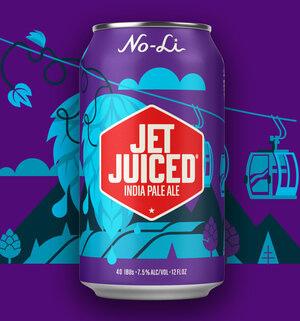

Becoming Yakima

From the base of Mount Rainier, this agricultural hub is the state’s lead producer of apples, hops, mint and a host of other local favorite fruits and vegetables.
In the heart of Central Washington sits the fruitful Yakima Valley. With a backdrop of Mount Rainier and the Cascade Mountains, this growing city continues to be an agricultural capital for the state. Its rich and porous soil makes the Yakima Valley a lead hops producer. In fact, the area produces 75% of all the hops grown in the U.S. It is also a leading producer of tree fruits like apples, cherries, peaches, pears, nectarines and apricots. It’s also become a hub for vineyards and wineries. Sitting roughly along the same latitude as the rich wine regions of France,
Yakima is quickly becoming a tourist destination to sample the local wines and tour the region. However, the physical location of Yakima as a city is mainly due to the history and power of the railroads.
The Yakama tribe were the first known inhabitants of the Yakima Valley. After the Lewis and Clark Expedition first crossed through the valley in 1805, a steady stream of settlers began to make their way to the area. A small village located near Ahtanum Creek emerged in the 1860s,

and soon it became known as Yakima City. In 1880, there were 3,000 people in the county. Naturally, the railroads followed. The Northern Pacific Railway advanced up the Yakima Valley towards Puget Sound. The future of Yakima was dependent on the railroad, and Northern Pacific thought Yakima City was too swampy and poorly laid out. So, Northern Pacific decided to put the main station four miles north and establish a new city. In early 1885, new lots were offered to the people of Yakima City. The railroad paid the moving costs for residents and business owners to move to the new city they called “North Yakima.” Entire businesses and buildings were hauled four miles by teams of mules and horses.
The new North Yakima soon established itself as the commercial center of the valley. On Jan. 1, 1918, the “North” was dropped from the name, and it became, simply, Yakima. The old Yakima City was renamed Union Gap, which was named for the gap between the hills created by the Yakima River.

The city’s population rose steadily, from 45,588 in 1970 to 54,843 in 1990, and to 93,829 in 2020. This makes it the 11th largest city in Washington. The population increases were fueled partly by the arrival of Mexican American farmworkers from Texas in the early 1930s. When the U.S. entered World War II, and farm labor became scarce, the U.S. government established the Bracero program in 1942. This allowed Mexican workers to come to the U.S. to work the fields and farms. The Yakima Valley became a temporary stop for many Mexican farmworkers. By the 1980s, Yakima’s Hispanic population was at 14.8%. Today it is 50%, one of the highest of any county in the state.


Yakima continues to be a dominant force in the agriculture industry. According to Washington State University, Yakima County leads the state in the production of apples, sweet cherries and pears (including Bartlett pears). There are hundreds of acres of peaches, nectarines, plums/prunes, apricots and other soft fruits. It is also the leading producer of squash (summer and winter) and peppers (bell and chile) in Washington and has over 3,600 acres of sweet corn. Also, a number of berry crops, including blueberries, raspberries, blackberries and currants, find their way to niche markets, broaden the selection of fruits at numerous fruit stands in the area, and contribute to the growing fruit juice industry in the region. The county has more than 19,000 acres of grapes, including juice grapes like Concord as well as wine and table grapes. Yakima is also Washington’s No. 1 producer of melon, including watermelon, cantaloupe and muskmelon.
With the steady population growth, there is barely any visible delineation between Union Gap and Yakima. The old Yakima City and North Yakima have melded into one.
Washington makes the Best Beer Ever




Fresh Hops for All

Did you know that the dry climate and perfect amount of sunlight in the Yakima Valley creates the perfect conditions for growing the best hops around? Brad Carpenter of Carpenter Ranch gave us here at Washington Grown an inside look at how Washington’s amazing growing conditions truly make the best beer.


Not only does Carpenter Ranch grow the essential ingredient for the freshest beer, Brad and his brother, Mike, process the hops for a variety of different uses. At their plant, the Carpenters turn those fresh hops into pellets, which is typically what most brewers use to flavor their beer. However, for “the fresh hop beer, they take the hops themselves, and they’ll take the bag of these directly, and they’ll pour it right into their vat,” explained Brad. The fresh hops create the “yellow looking stuff” in brew, also known as lupulin, ”that has all the essential oils that bring flavoring to beer,” said Brad.
Many are surprised to find out just how different hops are than the typical Washington crop. “First, make sure you have a big, strong trellis to support the weight of that hop, because that plant grows about 18 feet, and it spreads out another four or five feet,” explained Brad. “A string goes all the way to the wire, and that’s where the vine grows around that string, all the way up to the top. It’s a great plant, a very prolific plant. I mean, to grow 18 feet every year? Unbelievable.”
Back at their processing unit, we also got to see how the hops are dried right on site. To start our tour, we walked through the plant where hops were being clean and separated. Hops are typically dried in a kiln “We thenthen take them to the processing unit where they’re pelletized.” Drying the hops out for about eight hours maintains the integrity of the lupulin glands. “That’s what the brewers want,” said Mike.
The Carpenters’ hops go into everything from lager to ale, giving these beers their distinct flavor. However, for brews that require fresh hops, in order to really catch the flavor of the hops, the brothers have to ensure that they get from field to brew in 24 hours. “We’re excited about being involved in the hops industry,” the brothers explained. “It’s a lot of fun. A lot of work, but a lot of fun.”
Innovation within the hops industry has changed over the years. “Science and technology are

amazing,” Brad explained. “It’s really a lot more technical than it was when I was a young man, and I think it’ll be different 20, 30, 40 years from now.”
“You know, that’s something my dad always says,” Mike said. “He said he’d give anything that my great-great-grandad would be able to come and see what we’ve done.”
To see the full story of the Carpenter Ranch, visit wagrown.com, Season 9, Episode 13.

TV & ONLINE

KSPS (Spokane)

Mondays at 7:00 pm and Saturdays at 4:30 pm ksps.org/schedule/
KWSU (Pullman)
Fridays at 6:00 pm nwpb.org/tv-schedules/
KTNW (Richland)
Saturdays at 1:00 pm nwpb.org/tv-schedules


KBTC (Seattle/Tacoma)
Saturdays at 6:30 am and 3:00 pm kbtc.org/tv-schedule/
KIMA (Yakima)/KEPR (Pasco)/KLEW (Lewiston)
Saturdays at 5:00 pm kimatv.com/station/schedule / keprtv.com/station/schedule klewtv.com/station/schedule
KIRO (Seattle)
Check local listings kiro7.com
NCW Life Channel (Wenatchee)

Check local listings ncwlife.com

RFD-TV

Thursdays at 12:30 pm and Fridays at 9:00 pm (Pacific) rfdtv.com/
*Times/schedules subject to change based upon network schedule. Check station programming to confirm air times.

Metropolitan Grill’s
Poblano Scalloped Potatoes
Total time: about 2 hours

Serves: 4 to 6
An ideal accompaniment for grilled steak, this will be a welcome side dish for other meals as well. To see this recipe being assembled (plus get some tips for grilling steak), check out Season 1 Episode 12 at wagrown.com. If your grill’s heated for the main course, you can char the peppers on the grill; that step is adapted to the oven here. You can use smaller individual gratin dishes if you like.
2 poblano peppers (about 1/2 pound)
2 to 2 1/4 pounds Yukon Gold potatoes
1/2 cup heavy cream, more if needed
1/4 cup sour cream
3/4 cup grated Parmesan cheese
1/4 cup grated cheddar cheese
2 teaspoons canola oil
1/2 cup diced yellow onion
3/4 teaspoon kosher salt
1/4 teaspoon freshly ground black pepper
Preheat the broiler and arrange the rack about 5 inches from the heat source. Put the poblano peppers on a rimmed baking sheet and broil until charred on all sides, 8 to 12 minutes, using tongs to turn the peppers occasionally. Transfer the peppers to a medium bowl, cover tightly with plastic wrap and set aside to cool. Lay the cooled peppers on a cutting board and peel the skin with your fingers, or use the back of a knife to scrape away the skin. Cut out the core and discard the seeds. Dice the roasted peppers and set aside.
Set the oven to 350 F and arrange the rack in the center. Use cooking spray or oil to coat the inside of a 12-inch gratin dish or similar shallow baking dish.
Bring a medium pot of salted water to a boil over medium-high heat. While the water is heating, peel the potatoes and cut them into 1/8-inch slices. Carefully add the potato slices to the boiling water, stir gently to separate the slices and simmer to parcook for 4 minutes. The water shouldn’t boil again; reduce heat if needed. Drain the potatoes, run under cold water to cool and set aside.
Whisk together the heavy cream and sour cream in a small bowl. The mixture should be thin enough to drizzle; add a bit of cream if needed. In another small bowl, toss together the Parmesan and cheddar cheeses until well mixed.
Heat the oil in a medium skillet over medium heat. Add the onion and cook, stirring occasionally, until tender, 2 to 3 minutes. Take the skillet from the heat and stir in the diced peppers.
To assemble, use about one third of the potatoes to form an even layer across the bottom of the baking
dish. Sprinkle with about one third of the salt and pepper, scatter about one third of the poblano-onion mixture over, drizzle with about one third of the cream mixture and top with about one quarter of the cheese. Repeat this layering two more times, with extra cheese left for the top layer.
Cover the baking dish loosely with foil and bake until the potatoes are tender when pierced with a knife, about 1 hour. Remove the foil and continue baking until the top is lightly browned, about 15 minutes longer. Cut into portions and serve.
ENTER TO WIN!
Visit our website and sign up to be entered into a drawing for a $25 gift certificate to the Metropolitan Grill in Seattle!

*Limit one entry per household



DID YOU KNOW?
The Yakima Valley contains approximately 75% of the total U.S. hops acreage, accounting for over 77%of the total U.S. hops crop.
BEER BREWERY CARPENTER FARMWORKERS HOPS METROPOLITAN MINT
POBLANO POTATOES RAILROADS RESEARCH
SCIENCE
SPOKANE YAKIMA
Seattle’s Metropolitan Grill was built on tradition and the best local ingredients
Choosing local ingredients is important from start to finish at Seattle’s Metropolitan Grill. Whether it’s Washington beef for their famous steaks or Washington asparagus for their vegetable dishes, getting locally grown ingredients for their dishes is top priority. Through Charlie’s Produce, they are able to source a variety of Washington-grown vegetables and produce.
And critics agree that the ingredients matter. In 2019, they were awarded Seattle’s Best Steakhouse by Yelp, and many more awards decorate their website.

They are dedicated to their professional staff, taking great pride in providing every guest with an exceptional dining experience.
“Speechless. Top-notch service quality, just heavenly food,” said one Yelper recently.

“Truly incredible experience! Fantastic from start to finish! Incredible service from true professionals who take pride in their craft,” explained another Yelp reviewer.
To learn more or reserve a table, visit themetropolitangrill.com

More than just ingredients
Great beer doesn’t just happen, it takes hard work and dedication. At the family-owned and fully independent No-Li Brewhouse in Spokane, owner, John Bryant, focuses on quality and community to create beer that’s a step ahead.

“No-Li is basically a community brand,” Bryant told our host, Kristi Gorenson. “And we have people who live and work in Spokane and Seattle that all drive this machine everyday. And I hope in the DNA of our culture is that we’re a fabric of this community.”
Not only does the community love No-Li beer, the world does as well. Their IPA “Born and Raised” won at the International Beer Cup, and they have won 66 international medals since 2012. “It’s really awesome that it came from Spokane, came from the state of Washington, from people that all live here and work here. We truly are Washington Grown.”
A couple of years ago, we got a behind-thescenes look at what it takes to make great beer happen. “You got pipes, and you got hoses, and you got passionate people moving things around,” said Bryant. They use 30-barrel tanks, which is the equivalent of 60 kegs of beer. The process begins with the wort, which is the genesis of beer. It is where they separate out the spent grains. Liquid

then goes over the wort, and it is cooked. They add hops at a certain time during the boil, which adds different flavors. After a stop at a heat exchanger, it’s cool enough to put into a fermenter. Then yeast is added, and the magic begins!

“Everything we use is from the region. The hops are from the Yakima Valley, the water is from the beautiful Rathdrum aquifer, and the barley malt is all from this region,” explained Bryant. “One thing that makes the beers in the Northwest and Spokane have a leg up is that the water that we have is amazing. And then the malts that we have in our backyard and the hops in our backyard. We keep vibrant and healthy yeast strains that we try to use actively and then get a fresh one so the beer is always really working hard for you.”
After sanitization, the cans are hit with a shot of carbon dioxide to keep the air out. “Air is the enemy of really fresh beer,” explained Bryant. The cans are filled with the beer, and after lids are attached, they head to the shipping department and cooler. “Within two hours, they are picked up and taken to our distributor and to a grocery store.”
In 2012, about 98% of all the beer in Spokane was made in some other city in some other state. Now, more than a quarter of the beer is locally made, and Spokane recently ranked No. 1 as the best city in the U.S. for beer lovers according to Lawn Love. There are 31 breweries in Spokane, and next time you are searching for the best in hops and beer, be sure to visit this beer-lovers city.





Q&A
Keeping our hop fields healthy takes an army of farmers, researchers and field experts. We met with Washington State University to see how innovation is growing for managing hop pests.

What do you do at WSU?
As a scientific assistant, I serve on a team of WSU researchers in developing alternative approaches in pest management. We look at both synthetic chemicals and organic materials.

You have some new ideas for managing pests in hops as well. Tell us about that.

We’re always looking at ways to get away from pesticides and the residues that they leave. In this instance, we are looking at nonchemical solutions to keep mites down. We’ve had some really good success lately with the Mighty Mint oil and another one called TetraCURB. Mighty Mint is a blend of peppermint, rosemary, mineral oil and a few other ingredients. It’s done really fantastic the last few years in trial. We’ve had almost 100% mite control in our trials.
with Dan Groenendale
What is it about mint that we think is stopping the mites?
Well, first of all, it’s the Washington mint. (laughs) They are using a mix of two gallons of the pesticide in 100 gallons of water. They spray it on to control the mites. As far as what’s in the peppermint that the mites don’t like, we don’t 100% know, but it’s probably attacking parts on the skeleton of the mites and helping them to dry out. Or, it may just be chasing them away. Too much mint may be too strong!
Where would we be without research, like what you are doing here at WSU Prosser?
We’d probably be using some really awful chemicals. We’ve gotten away from some stuff that was pretty nasty in the past, like leads and arcenates. Things like DDT have gone away, and we now have things that are much more friendly to the environment and also a lot safer for the people who are spraying it.
